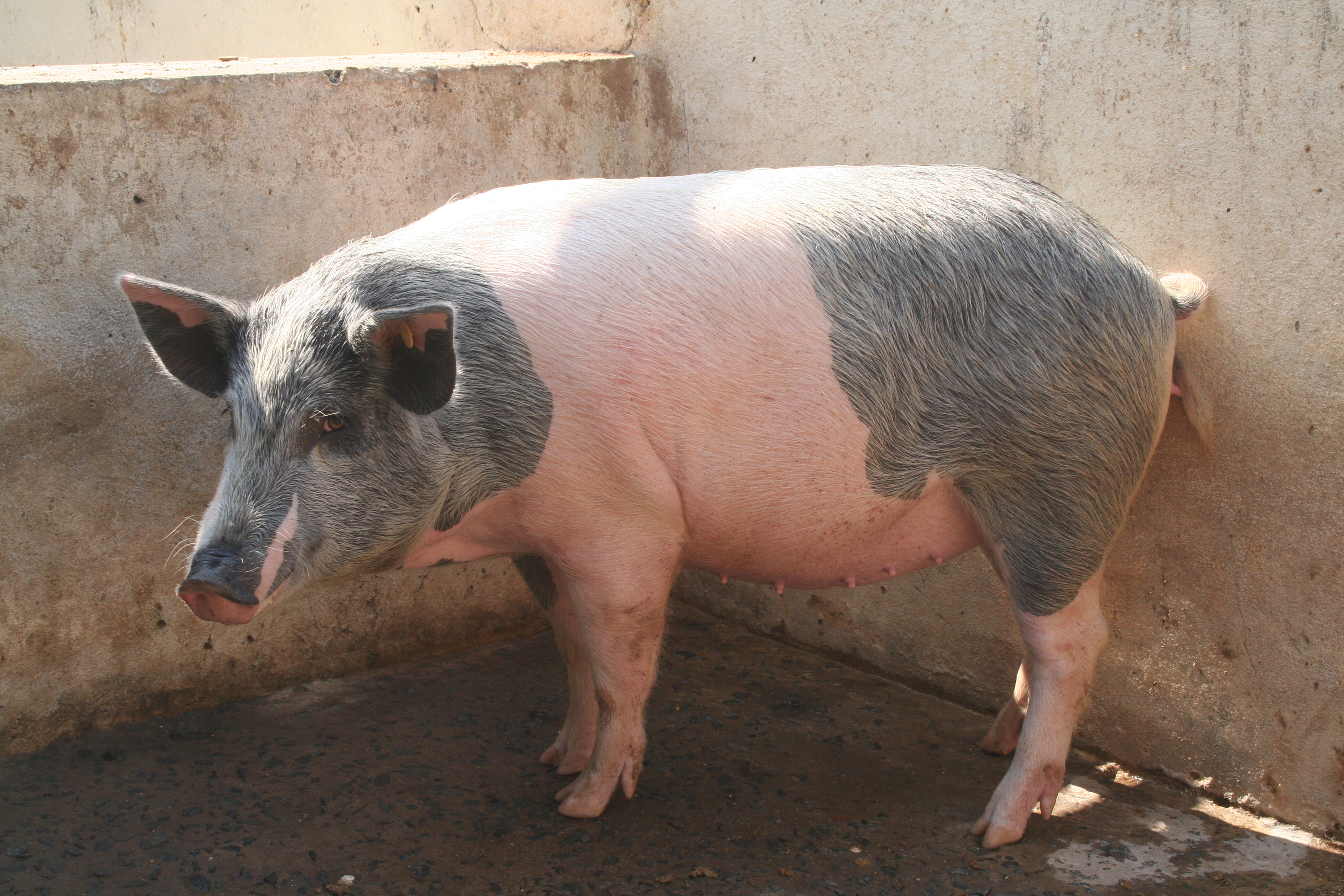
animal: pig
Scientific name : Sus scrofa domesticus or Sus domesticus
Common / Local Name : Swine or Hog
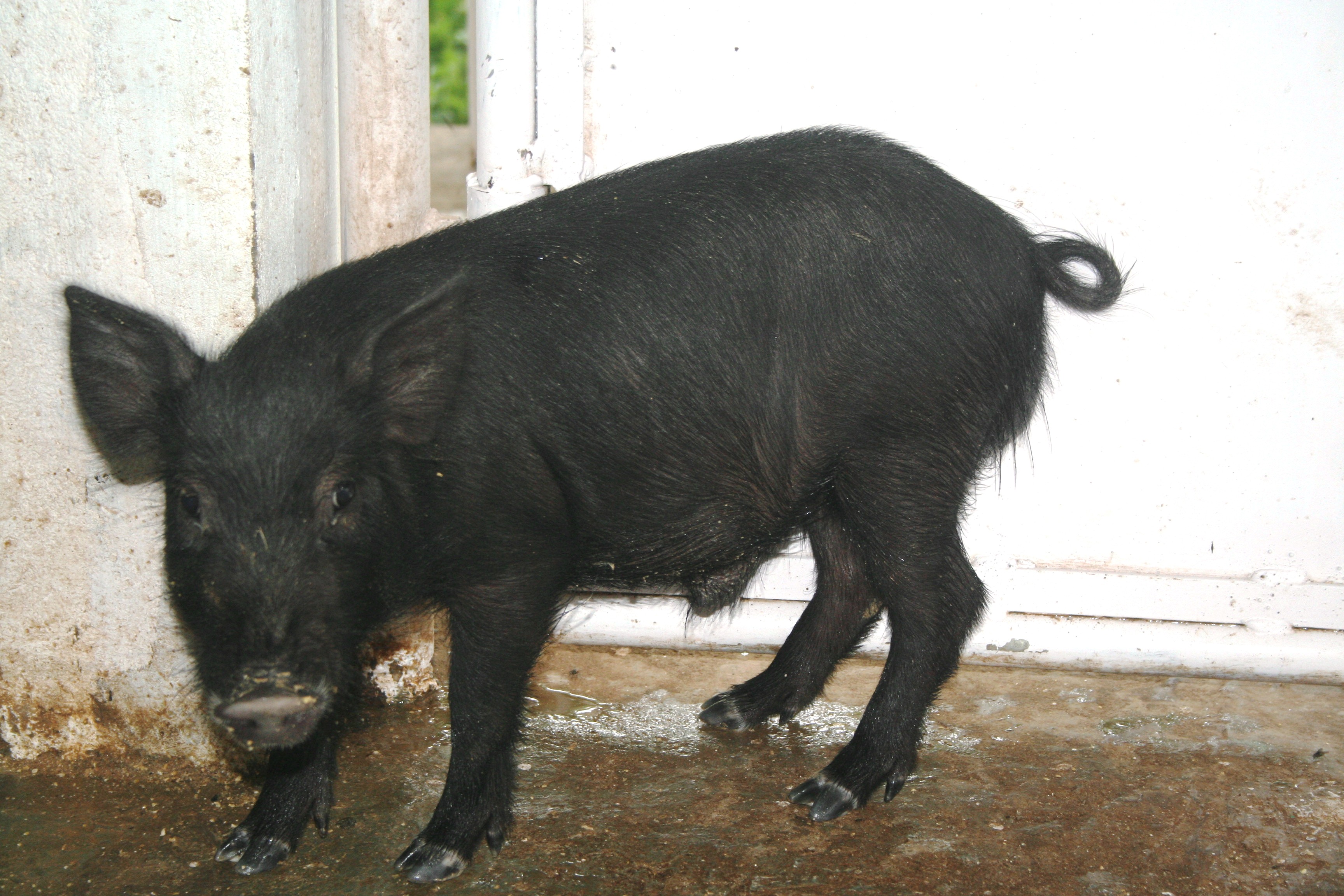
Rearing of Pigs will be a suitable option for small and landless farmers, farm women and it can also be carried out as a part time work by the employed personals to get additional income. Pigs convert inedible feeds, forages, certain grain by-product, damaged feeds and garbage into valuable nutritious meat. Pig is a highly prolific breeder which gives 10-12 piglets at a time and it grows faster with minimal inputs. With a small investment on building and equipments, proper feeding and sound diseases control program farmer can profitably utilize his time in this subsidiary occupation.
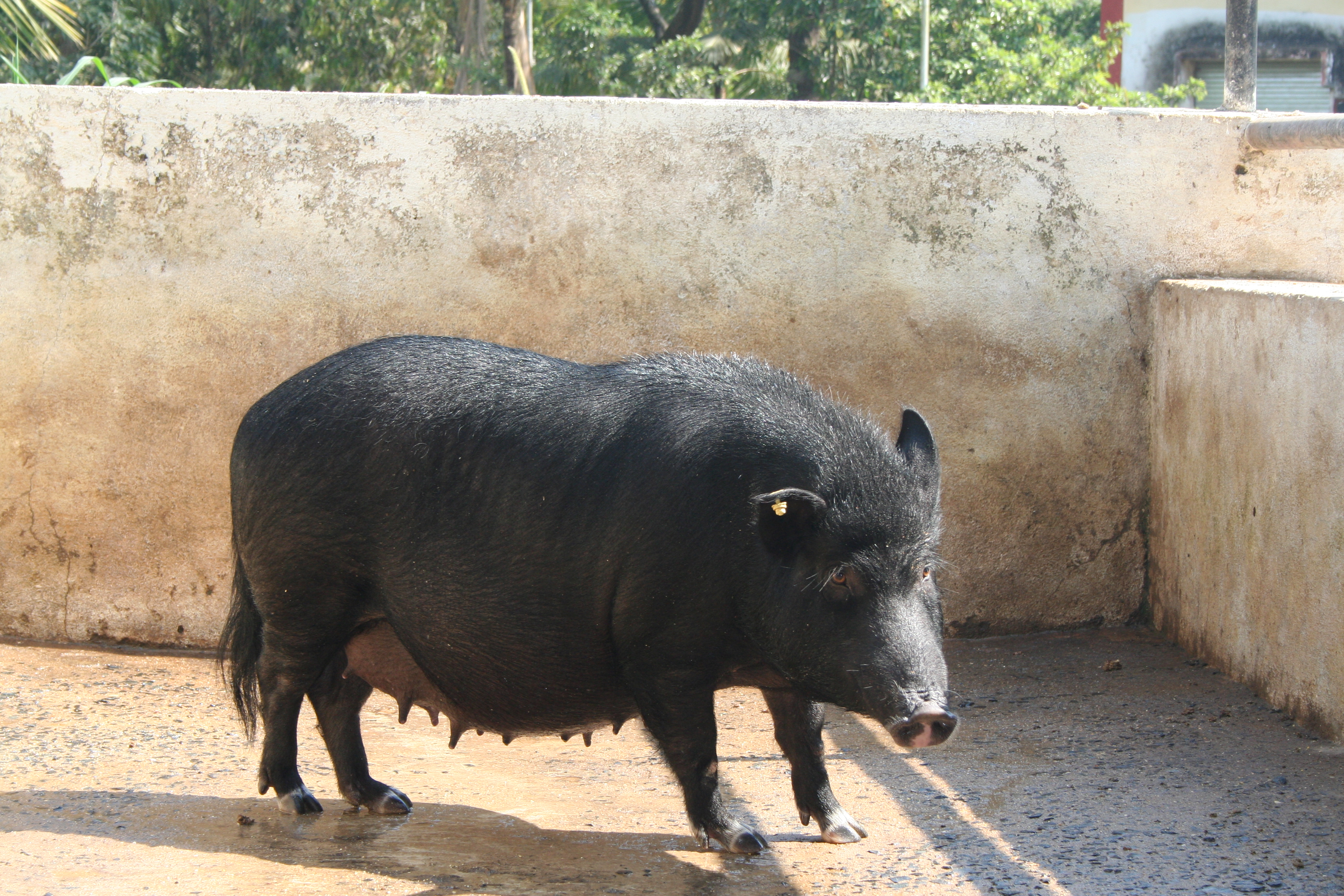 Agonda Goan
Agonda Goan
Agonda Goan Breed of the pig plays major role in the profitability of pig rearing. Breed of the Pig selected should adjust to the prevailing and should have faster growth rate. Better adoption, sustain on scavenging. Early maturity and good mothering ability. These pigs are difficult to handle as wild in nature. This breed is better for crossbreeding with exotic breed so as to get better adoptability and disease resistance.
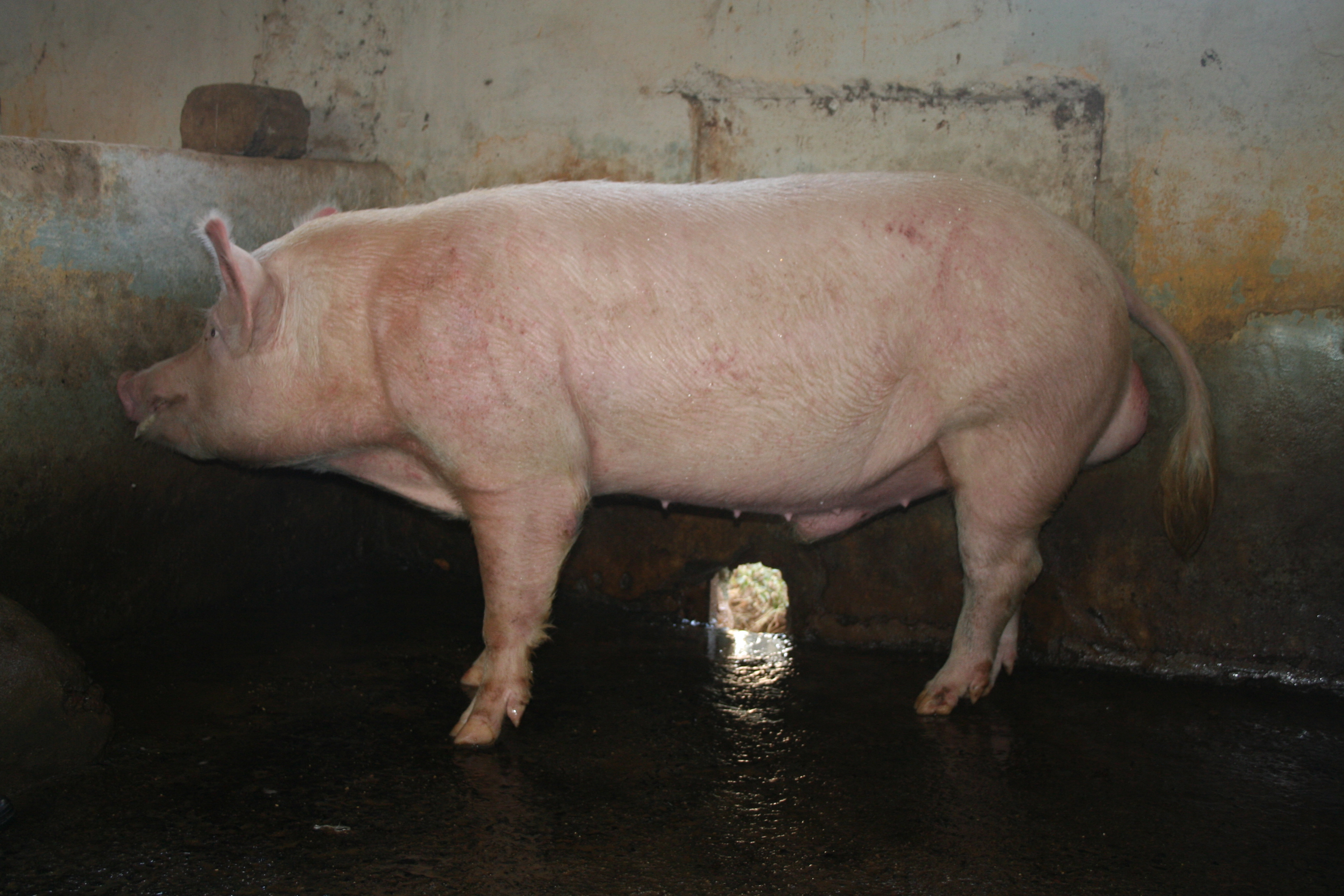 Large White Yorkshire
Large White Yorkshire
Large White Yorkshire This is well suited in Goa conditions. This breed has good growth rate and feed conversion ability under intensive care. This can be used for crossbreeding with Goa Local.
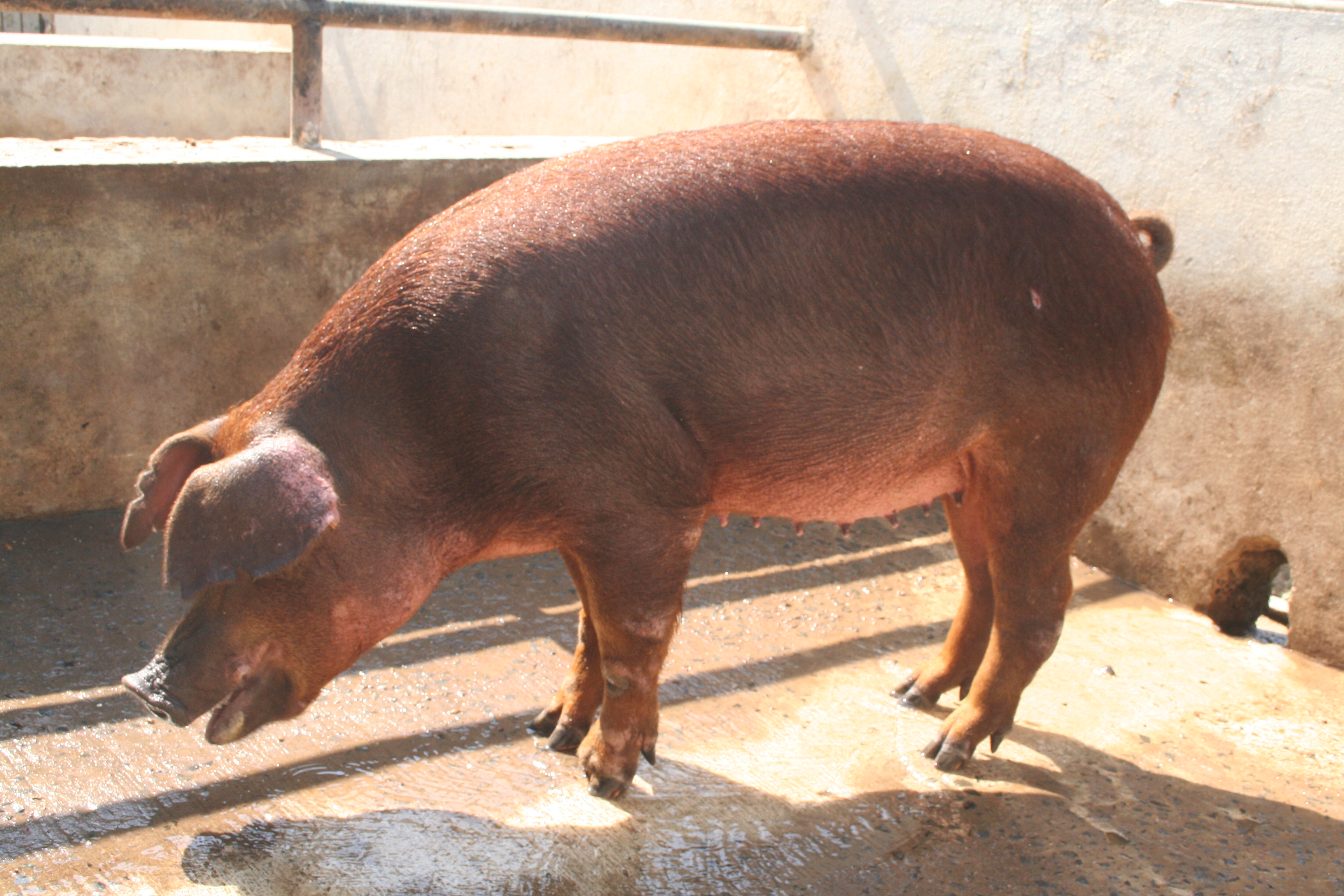 Duroc
Duroc
Duroc This breed has better growth and lean meat (Less fat). This is not well adopted in Goa condition. It has poor mothering ability in Goa conditions. This can be used for crossbreeding with Goa Local.
 Crossbred pig
Crossbred pig
Crossbred pig These are the pigs produced by crossing Agonda Goan female pig with Large White Yorkshire male. These crossbred pigs have better growth rate and feed conversion efficiency. They do not require intensive care like pure exotic breed like pure exotic breed like large white Yorkshire.
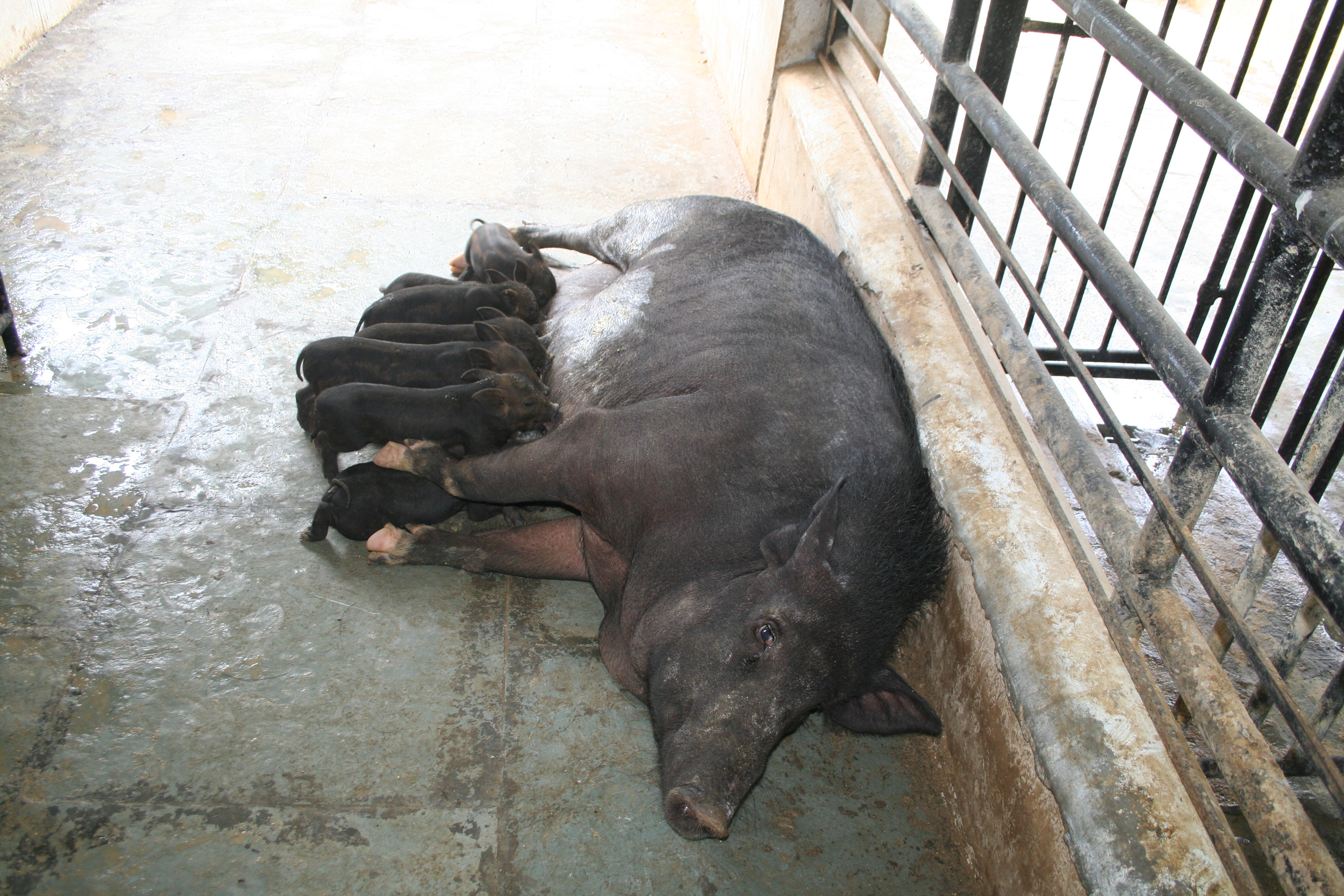 Agonda Goan female with litter
Agonda Goan female with litter
Performance of crossbred pigs
Average Birth weight(grams) |
820.34±38.16 |
Weight at weaning at 40 days age |
5.42 kg |
Average age of puberty |
190 days |
Average age of sexual maturity |
220 days |
Age of first farrowing |
335 days |
Weight at 10 months age |
85 to 90kgs |
Dressing percent |
84.01% |
Back fat thickness |
3.36cms |
Housing should be simple and durable. The flooring should have a rough finish and made proof cement mortar or rough stone flooring. Proper drains should be provided so that the effluents are disposed off. Generally under village condition the housing can be made up of pens measuring 3 m X 2.4 m with an open yard of nearly the same dimension or in some cases slightly longer. Walls should be 1.2-1.5 m high from the floor. For the proposes of farrowing some of the pens could be converted into farrowing pens by providing guard rails made up of G.I pipes of 5cm diameter, along the walls, 20-25 cm from the ground and the wall. In addition to guard rails, creep space can be provided for the piglets along the wall by making a partition or in one of the corner with separate entrances for the piglets. This space usually of 0.75 m X 2.4 m area.
The successes of the pig farming are dependent upon the efficient scientific feeding practices. In India, pigs are usually slaughtered at about 70kg body weight, which is generally achieved in six months of age. To meet the intensified pork production, properly balanced high quality ration must be provided to the pigs. Three types of rations are fed to the pigs before they reach the market weight i.e. creeper/ starter, grower and finisher rations. The creeper/ starter feed is generally fed up to the attainment of 15-20 kg body weight , which is followed by grower feed up to the attainment of 50 kg body weight, and then followed by finisher feed up to the attainment of 70 kg body weight. However, in Goa most farmers feed their pigs with freely available food materials like hotel/kitchen waste, bakery waste, garbage from vegetable market, broiler offal etc. it is suggested that these unconventional feeds should be fed as the partial replacement for the ingredients in standard ration to economize the pig production.
For references of the pig famers, composition of three types of
Standard pig ration have been provided.
Ingredients |
Creeper/ Starter Feed |
Grower Feed |
Finisher Feed |
Maize |
50.0 |
45.0 |
40.0 |
Rice polish |
22.5 |
35.0 |
47.5 |
Soybean meal |
25.0 |
17.50 |
10.0 |
Mineral mixture |
02.0 |
02.0 |
02.0 |
Common salt |
0.50 |
0.50 |
0.50 |
Gilts should weigh at least 80 to 100 kg before breeding. Ovulation rate increases during successive oestrous period (up to fifth) following puberty. Thus it is advantageous to delay the breeding of gilts until the second or third oestrous. Litter size increases on an average in succeeding pregnancies up to 5th or 6th litter. It is therefore advantageous to cull the sow from a breeding herd after her fifth or sixth litter size goes thereafter.
Age to breed gilts |
7-8 months |
Weight at breeding |
100-120 kg |
Length of heat period |
2-3 days |
Best time to breed in heat period |
Gilts ?first day |
Number of services per sow |
2 services at an interval of 12-14 hours |
Period of oestrous cycle |
18-24 days (Average 21 days) |
Occurrence of heat after weaning |
2-10 days |
Gestation period |
114 days |
The average length of oestrous cycle in pigs 19-21 days. The oestrous symptoms last for three to five days beginning with vulvar swelling and vaginal discharge. In true oestrous there is frequent urination, reduced appetite, mounting and starting for service detected by the erection of ears and immobility when normal pressure is applied to the back. Best time for breeding is during the latter half of the day or early on the second day of oestrous. In many cases the gilts and sows continue to exhibit the standing heat on the next day. In these cases the animals should be rebred and the interval in the case of rebreeding should be 12-14 hours. This procedure will ensure a high conception rate in the herd.
Sows may come into heat two to ten days after weaning and may be bred at this time. But better results can be obtained by breeding them in the second post lactational oestrous. The animals which have been bred should be observed for the appearance of subsequent oestrous. If sows not conceived even after successful mating with a boar in two continuous oestrous cycles it is desirable to cull them from the herd. It is important not to overfeed sows which have been bred. Over fat sows are apt to produce weak pigs and crush more piglets at farrowing. Sows should gain about 35 kg and gilts about 55 kg from breeding to farrowing.
The death of a sow after farrowing, poor lactation capacity of the sow results in orphan piglets. The orphan piglets may be transferred to another sow that has farrowed recently. To ensure acceptance of orphan piglets the sow should be separated from her own litter for short time and the orphanage piglets and her own piglets are to be applied with some strong odour giving substance like tincture iodine/ benzoin and brought back altogether to the mother. Orphan piglets can also be raised with milk replacer prepared by mixing one egg yolk to one liter of cow milk.
Separation of piglets from her mother is to be carried out 6 to 8 weeks of age. The sow should be separated from the piglets for a few hours each day to prevent stress of weaning and feed is reduced gradually. The piglets should be dewormed after 2 weeks of waning. The piglets should be gradually shifted from 18% protein creep feed to 16% grower ration over a period of two weeks. Group of 20 piglets of more or less the same age should be housed in each pen.
Like other livestock pigs also get sicknesses due to bacterial infections, viral infection and parasitic infestation. Many times stresses due to climate change or sudden change of feed or faulty food material causes illness in pigs.
Vaccination all the newly born piglets should be vaccinated at least against Swine fever at the age 2 months. Vaccine against Pasturellosis (Haemorrhagic septicaemia HS) and Foot and Mouth Disease vaccine like cattle is also preferred in pigs.
Deworming In young pigs, infection with roundworms can cause diarrhea, weight loss, ling problems and death. Hence, the piglets should be dewormed regularly once three months.
Sow is unable to supply the needed iron through milk to the fast growing piglets maintained in concrete floored rooms are commonly suffering with anaemia. Piglet anaemia can be prevented by injection the piglets with iron dexton preparation or by smearing the pigs?mammary gland with ferrous sulphate solutions.
Skin diseases Skin infection is commonly occurring ailment which may be caused by several organisms like bacteria, lice, ticks, mites and fungi these results in thickening and crusting of the skin. Mange occurs around the head, ears, legs and tail but will spread over the body if not treated. The lice feed on the skin and irritate the pig, which will scratch and can cause wound, which become infected. Parasitic infestations can be treated by spraying of medicine or by dipping animal while treating animal pig house also should be sprayed with the same medicine.
How to improve profit in piggery by producing better quality meat :
Profitability can be increased by producing better quality pig i.e. pig having faster growth and better conversion ability. This reduces production cost as less feed and time is required to grow such pigs. Pig having better disease resistance will perform better as less expence on medicine.
By sale products it is economical to sale live pig but to get more returns if pork is sold there will be more profit. Profit can be increased to many folds if it is converted to products like sausages.
Input availability |
Address/Contact details |
1. Pig Farm, ICAR-CCARI, Old Goa |
|
|
1. Director, ICAR-CCARI, Old Goa 2. Director Department of Animal Husbandry and Veterinary Services |
|